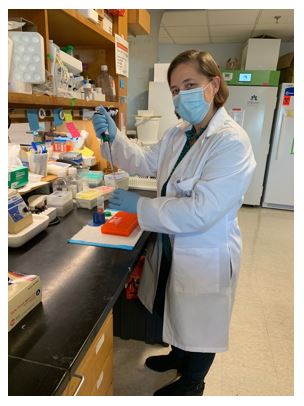- Your full title as you’d like it to appear.
Rachel S. Knipe, MD
Instructor in Medicine, Harvard Medical School
Assistant Physician, Division of Pulmonary and Critical Care Medicine, Massachusetts General Hospital
- Three statements about you – two true, one false.
- I was born in Cleveland.
- On the weekends I moonlight as a youth soccer coach.
- I didn’t start drinking coffee until medical school.
- Give us your ‘elevator pitch’ biography.
I grew up near Boston and moved to Chicago for college and medical school at the University of Chicago. After eight great years in the Windy City, I moved east to New York City for internal medicine residency at New York-Presbyterian Cornell, staying in NYC for a fifth year to serve as Chief Resident at NY Downtown Hospital in Lower Manhattan.
I moved back to Boston in 2010 for my fellowship training in pulmonary and critical care medicine. At that time, the Harvard program was combined between Mass General Hospital, Brigham and Women’s Hospital, and Beth Israel Deaconess Hospital so I received clinical training at all three hospitals. For the research portion of my fellowship, I trained in the lab of Andrew Tager, MD, a truly fantastic person, and an inspirational fibrosis mentor. He was instrumental in my decision to study the vasculature in pulmonary fibrosis and launching my research career.
Currently, I am a physician-scientist at MGH working to achieve a better understanding of the mechanisms that lead to the development of pulmonary fibrosis in the lungs, with a particular focus on the role of endothelial dysfunction and vascular permeability in fibrogenesis. The endothelium in general is a relatively understudied area of fibrosis research. In addition, I’m also interested in understanding the link between endothelial dysfunction and fibroproliferation that occurs after acute lung injury, which is particularly relevant in the era of COVID-19 ARDS. My goal is to use this biology to develop novel therapies to improve the lives of patients with pulmonary fibrosis.
dysfunction and vascular permeability in fibrogenesis. The endothelium in general is a relatively understudied area of fibrosis research. In addition, I’m also interested in understanding the link between endothelial dysfunction and fibroproliferation that occurs after acute lung injury, which is particularly relevant in the era of COVID-19 ARDS. My goal is to use this biology to develop novel therapies to improve the lives of patients with pulmonary fibrosis.
- What would you tell yourself as an Early Career Professional?
I still consider myself an early career professional! But if I could give my younger self advice, it would be to talk to as many people as you can about research ideas and take advantage of opportunities to present your work and meet people in your field of interest. Science is a team sport and is most productive when collaborative. I would tell myself not to be intimidated by getting feedback from senior scientists in the field, especially experienced leaders you meet through the ATS. I’ve benefitted tremendously from opportunities for committee involvement in the RCMB assembly and from ATS mentorship programs, where I have been fortunate to meet leaders like Lynn Schnapp, MD, ATSF and others, who are excited to support junior fellows and faculty in the areas of respiratory medicine and research. These mentorship relationships have made a huge difference in my career.
- If you weren’t in medicine, and were in a different industry altogether, what would you be?
The first thing that popped into my mind was ‘boat captain,’ because I can see the Boston Harbor from the windows in our lab, and I don’t get outside as much as I would like during the daylight hours. But seriously, I would probably be a teacher. I like communicating with people about medicine and science and working with learners of all ages. I also like learning myself, a lifelong skill I picked up at the University of Chicago, and I enjoy explaining things to others as well. I love working with fellows, post-docs, residents, and medical students because they are always full of energy and ideas and that motivates and inspires me to keep pushing.
- What is your favorite way to spend a day off?
I have two sons who are six and eight years old, and my husband and I really enjoy taking the kids on bike rides, as both kids can independently ride bikes now. Another favorite activity for a day off is swimming together at the pool or ocean. And ice cream! Always ice cream.
- What areas of medicine are you most excited to see develop?
I am most excited about seeing the field of pulmonary fibrosis develop into personalized medicine, at a level where we can select specific treatments for specific patients. The field of oncology is ahead of us in terms of targeting therapies to subpopulations of patients based on genetic mutations found in each person’s cancer. As we learn more about the pathogenesis of IPF, I hope we will start to cluster patients in a way that will guide treatment decisions and design clinical trials to study response to targeted therapies.
- What is one advancement in your field you’d like to see in your career?
I’d love to see a cure for pulmonary fibrosis. Right now, therapies only slow the rate of progression, but I know we can and will do better. There is so much great data coming out about the importance of epithelial senescence, myofibroblast persistence, and even endothelial dysfunction, that I think there is a lot of hope that we will be able to develop novel therapies to stop progression, and then hopefully even to reverse established fibrosis.
- Which statement did you make up?
#1- I was born at Northwestern Hospital in Chicago!

